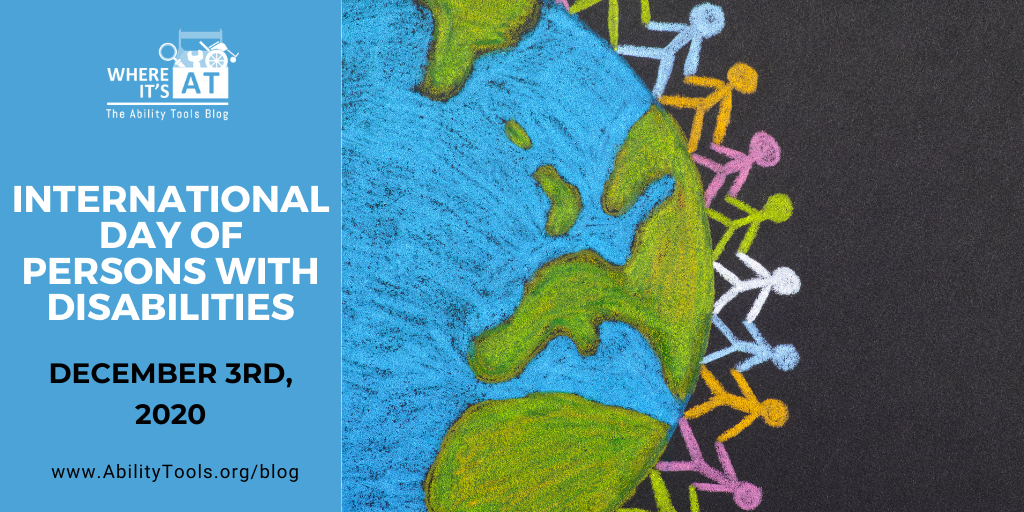
December 3rd is International Day of Persons with Disabilities. This year’s theme will be “Building Back Better: toward a disability-inclusive, accessible and sustainable post COVID-19 World”.
International Day of Persons with Disabilities has been observed by the United Nations since 1992 with varying themes, such as: “2015: Inclusion matters: access and empowerment of people of all abilities”, “2006: E-Accessibility”, and “2000: Making information technologies work for all”. Considering the Impact of COVID-19 on the disability community, it should come as no surprise that this year’s theme aspires to optimistically hope toward a post-COVID-19 in the coming year.
Across the globe, persons with disabilities have significantly less access to healthcare. With over 1 billion people in the world having some form of disability and 50% of those persons not able to afford healthcare, that’s 500 million people with disabilities who have no way to maintain their typical healthcare needs, let alone combat a global pandemic. Adults with disabilities are 3 times more likely than their non-disabled peers to have heart disease, diabetes, or stroke; all factors which make a person far more susceptible to experiencing dangerous complications with COVID-19. In fact, studies are showing that individuals with Intellectual and developmental disabilities (IDD) who live in communal settings are 3 times more likely to die from COVID-19 than their non-IDD peers.
It is against this backdrop that the UN has decided to shine a light on these pre-existing inequalities and expose the current and future danger of persons with disabilities being left behind as the world attempts to respond, and ultimately recover, from this global crisis. The UN is calling for a response that better serves the entire global community through more fully suppressing the spread and implementing systems which attend to the needs of the most vulnerable, first.
In October of this year, the Secretary-General submitted the first comprehensive report on the steps being taken by the UN to implement their Disability Inclusion Strategy. They are implementing a focus on not only making physical locations accessible, but ensuring accessible Information and Communications Technology (ICT) and accessible documents in order to provide equal access of information and participation. Their focus has been on four work streams:
- funding
- health response and recovery
- socioeconomic response and recovery
- humanitarian response and recovery
And in the spirit of “Nothing about us, without us” they built in a central strategy of consulting with persons with disabilities and representative organizations, recognizing that, persons with disabilities have the knowledge and lived experience required to ensure the success of disability inclusion while guaranteeing accountability of these systems.
You might be asking yourself, what can I do to participate? Well, through the use of Assistive Technology, you can more fully participate in these spaces, while keeping yourself and others safe:
- Always follow CDC guidelines and wear a mask and keep 6 feet apart whenever in the public or interacting with others.
- If you are in a lower risk category, offer to do the shopping for someone you know who is in a higher risk category. Better yet, order groceries to be delivered to limit physical engagement in community spaces to a minimum.
- Do your part to help suppress the spread of this surge in COVID-19 cases by organizing virtual celebrations rather than visiting loved ones in person.
- Set up regular virtual visits with others who might be experiencing social isolation to fight off loneliness and the temptation to participate in higher-risk social gatherings.
- If you feel comfortable, share your experience being a member of the disability community in your social media circles to raise awareness and spread the word about the International Day of Persons with Disabilities and why it is a relevant approach to our common betterment as a global community.




